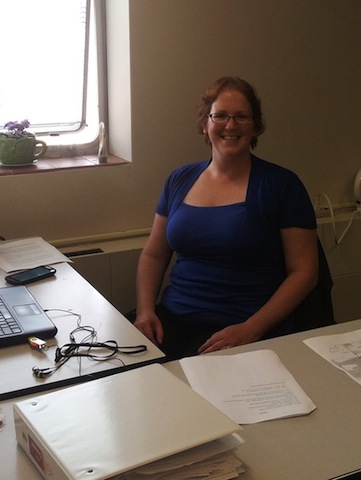Biography:
Noga Vaisblat is currently working on her PhD project at the University of Alberta under the supervision of Dr. Nick Harris. She grew up in a kibbutz in Israel and after serving in the IDF for 2.5 years began her career in Geology. She received her BSc degrees in geology and environmental studies in 2008 from the Ben Gurion University of the Negev in Be’er – Sheva in Israel. After working for a year in an international company offering soil stabilization and low coast housing technologies she started her Masters research at the Institute of Earth Sciences at the Hebrew University of Jerusalem in Israel.
The study focused on understanding the phase diagram and trace element behavior in the Peridotite – H2O system at subduction zone conditions via high pressure and high temperature experiments. With the birth of her daughter she decided to change direction and moved with her family to Edmonton, Alberta to work on the Montney Formation in AB and BC, focusing on diagenetic processes, petrophysics and geochemistry with the intention to have a better understanding how all factors relate to one another in siltstone reservoirs.
Project: The Influence of Diagenetic Process on the Petrophysical Properties and Geochemical Composition of the Montney Formation in Alberta and Northeastern British Columbia
Whilst diagenetic processes affecting sandstone and shale reservoirs are fairly well understood, these mechanisms have never been investigated before in siltstone reservoirs, such as the Montney Formation. This formation is a siltstone gas reservoir with vast estimated reserves, found in the Western Canadian Sedimentary Basin. Considering the significant influence that diagenesis has on reservoir characteristics such as porosity, permeability and mechanical properties, it is important to accurately describe those processes and constrain their effects on reservoir quality.
In my study I will develop better reservoir models through new insights into chronostratgraphic correlations, and identifying sediment sources and depositional systems through geochemical tracers. I will utilize high resolution microscopy imaging techniques, ICP-MS analysis of major, minor and trace elements, mercury porosimetry and pulse decay permeability measurements of core samples. This will allow me to characterize the mineralogical composition, the diagenetic phases and the paragenetic sequence of the Montney Formation, and interpret the depositional environment and climatic conditions.
